|
Listen to this post
|
September 14, 2022, Wednesday. I awoke at 6 a.m. We traveled over 140 miles since we raised anchor yesterday. We are now anchored near Big Bear Baby Bear State Marine Park.
Breakfast started at 7:30. Sausage links, quiche with puff, cranberry white chocolate muffins. A great start to the day as we are going on another “eco meander.” Before breakfast we met a couple from Galesburg, IL. It is, indeed, a small world.
Our “eco meander” started at 8:45 a.m. with a skiff ride to shore. Sam was our guide this trip. We visited Baranof Island (which is named for the Russian fur trader Alexander Baranof).
We learned that Alaska is rising 2 – 3 mm each year due to tectonic plates colliding (North American and Pacific plates). This is one of the most geologically active regions in the world. The Pacific plate is moving northwest at a relative rate of 5 to 7 cm per year.
We visited the forest,a tidal flat, and a meadow on this tour. It was great to explore various habitats at a slow pace so we could examine the plants and animals as we walked along.
Here are a few photos taken as we walked about the forest. We followed a creek into the forest as there are no trails in this area.
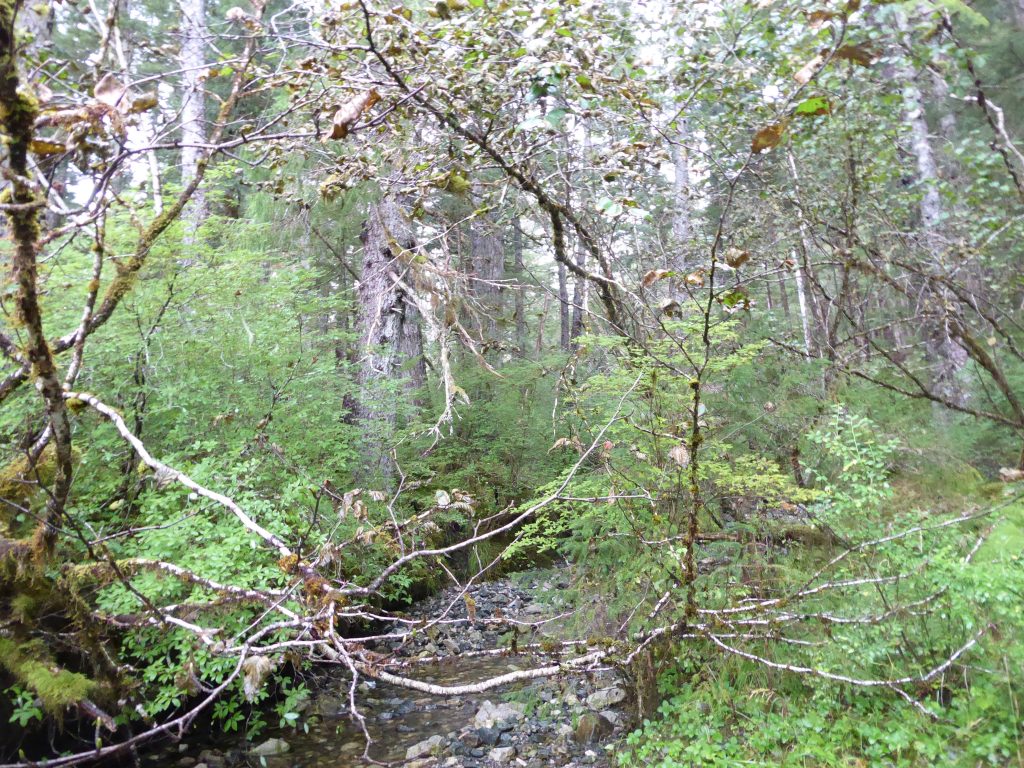
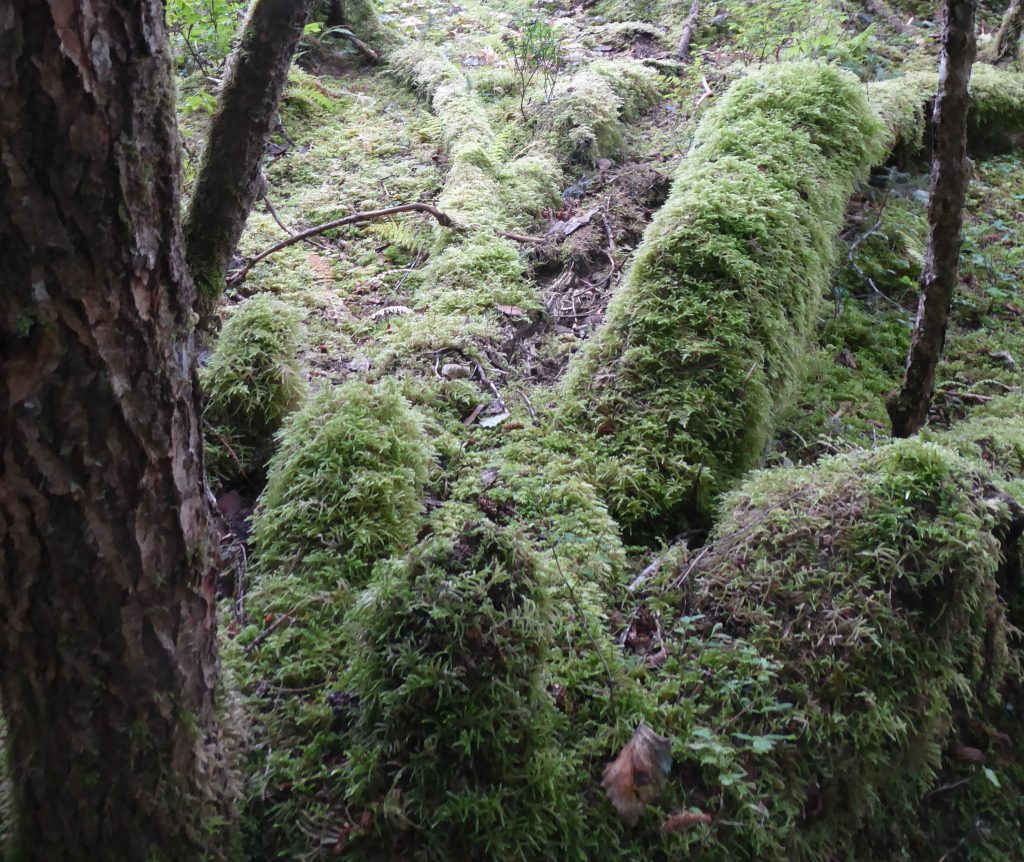
We learned difference between spruce and hemlock. Sitka spruce (Picea sitchensis) have individual dark green needles which are square. Their scaly bark resembles potato chips (small and circular). Western hemlock (Tsuga heterophylla) have soft, shiny, and flat needles. Their bark is stringy and becomes thick and furrowed with age (resembling bacon). Additionally, hemlock cones have bent needles while spruce do not.
Of course, we also encountered the Pacific Banana Slug (Ariolimax columbianus). Unlike the ones I have encountered in the Hoh Rainforest in Washington state, these are black/ brown.
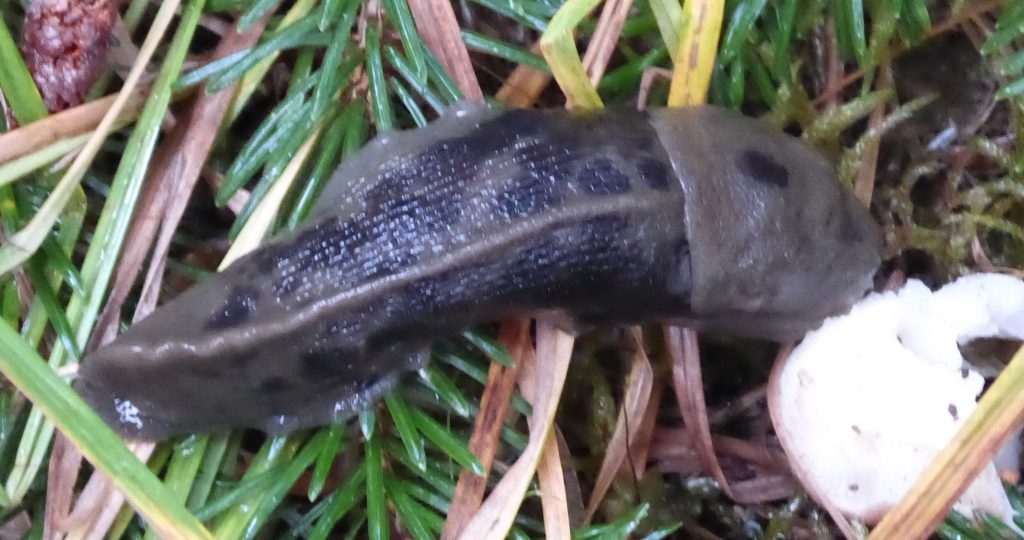
Here are a few photos taken as we walked along the tidal flat and meadow. While walking on the tidal flat we saw eggs of some invertebrate in large numbers under some rocks. We also saw these yesterday during our eco meander. These are periwinkle eggs (with periwinkles as well).
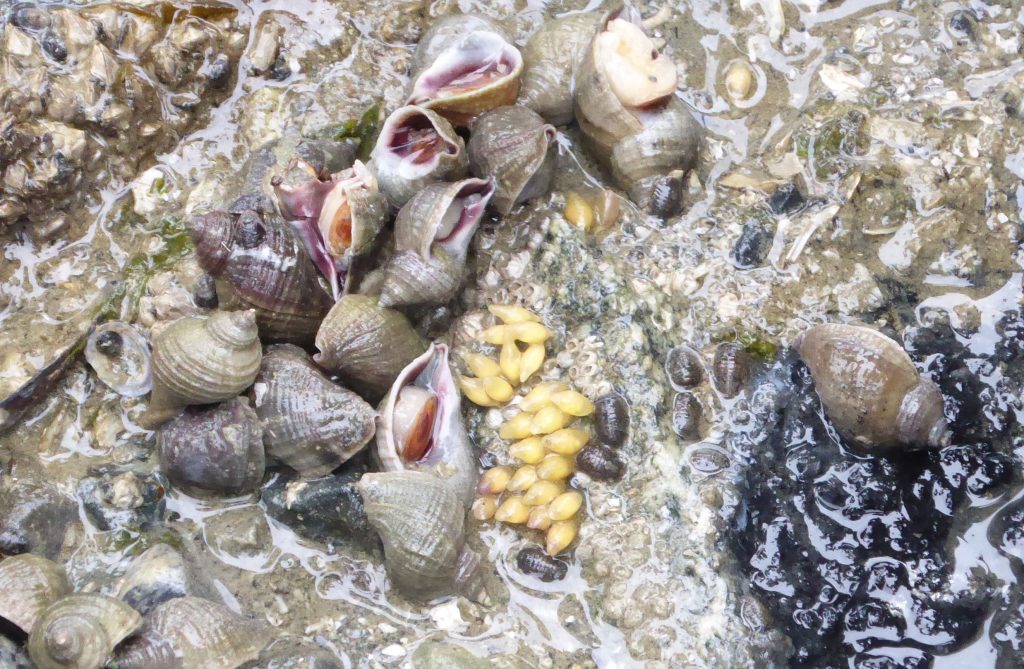
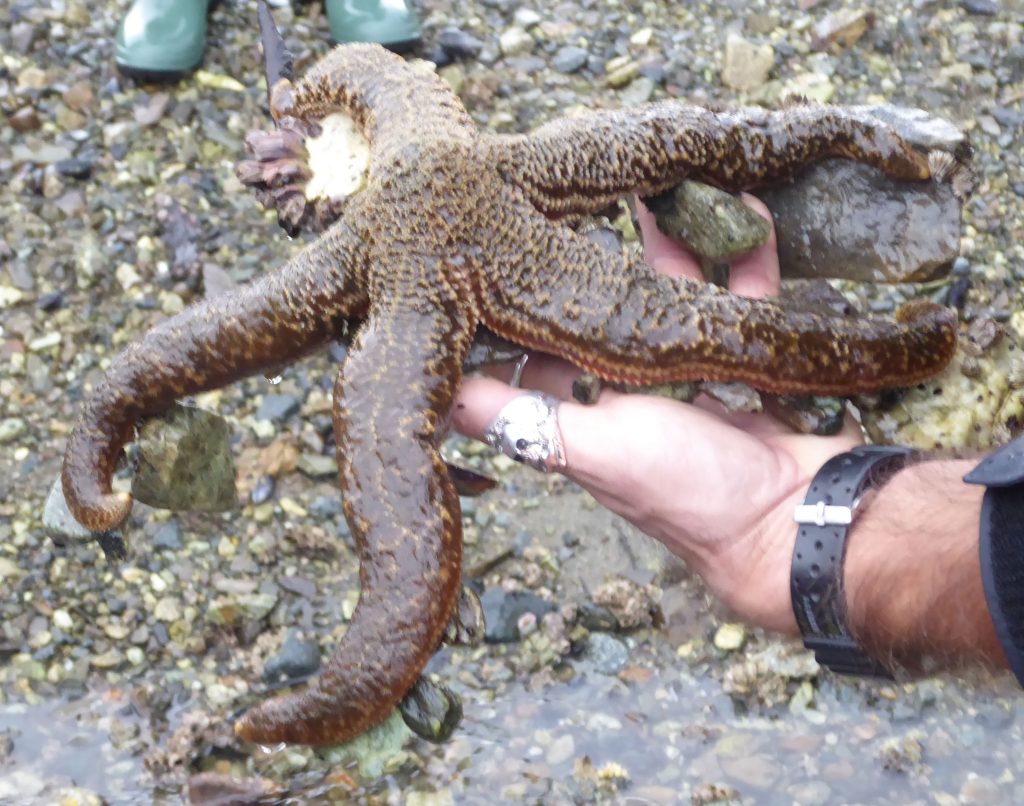
If you are not aware, the term starfish is not used much any more. Sea stars is the preferred term since these echinoderms lack scales, do not swim, and are not fish.
We all gt the chance to taste sea asparagus(Salicornia virginica). A bit salty, but tasted like asparagus.
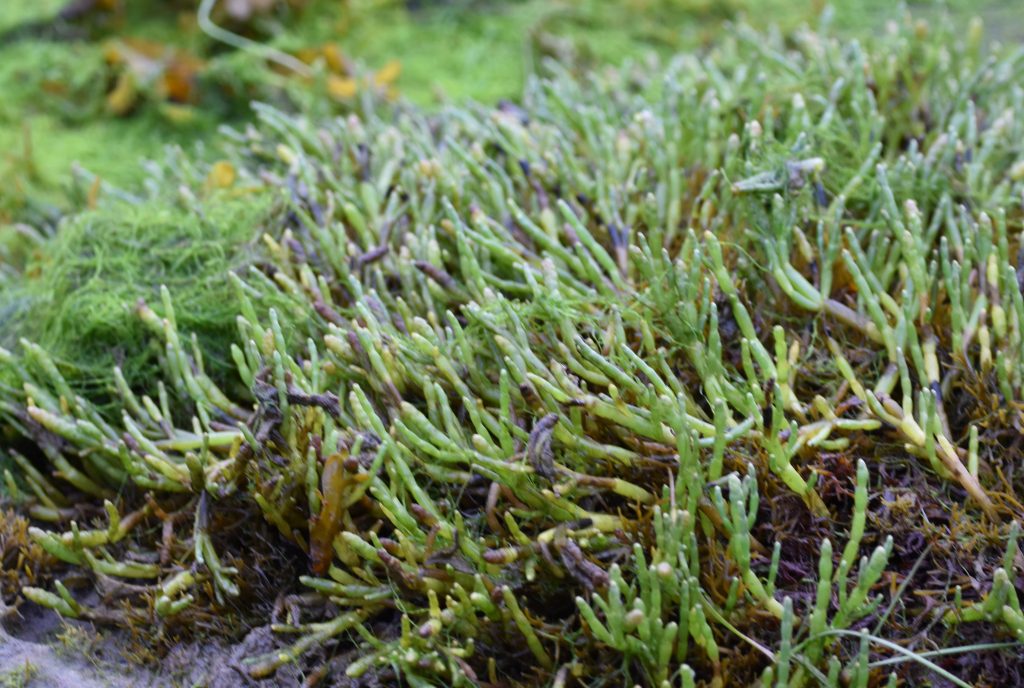
These islands are often referred to as the “A, B, C Islands.” They refer to the Admiralty, Baranof, and Chichagof islands in the northern part of the Alexander Archipelago. Much easier to pronounce.
Many of the names in this area are due to the Baranof party on a fur hunting expedition in 1799. The party raided (with their warrior/ slave Aleuts) the Tlingit. They won a big victory . To celebrate, they had a feast. The Aleuts did not know area that well so they gathered a bunch of blue mussels at low tide. This would be a safe source of food elsewhere. However, since they are filter feeders, they picked up dinoflagellates as part of their filtering. This is also known as a “red tide.” All who ate got paralytic shellfish poisoning. Over 150 in the party died. Hence the name Peril Strait and the name Poison Bay (where they died) and Deadman’s Reach.
We returned to the Wilderness Discoverer and had lunch at 12:30 p.m. Salad, antipasto, spaghetti, chicken, cauliflower seasoned, strawberry cream cheese bars with graham cracker crust. We are eating quite well on this trip. After lunch, we took a skiff tour of the marine park.
During the skiff tour, Doug fashioned a “flute” from a bit of bull kelp which was drifting past us.
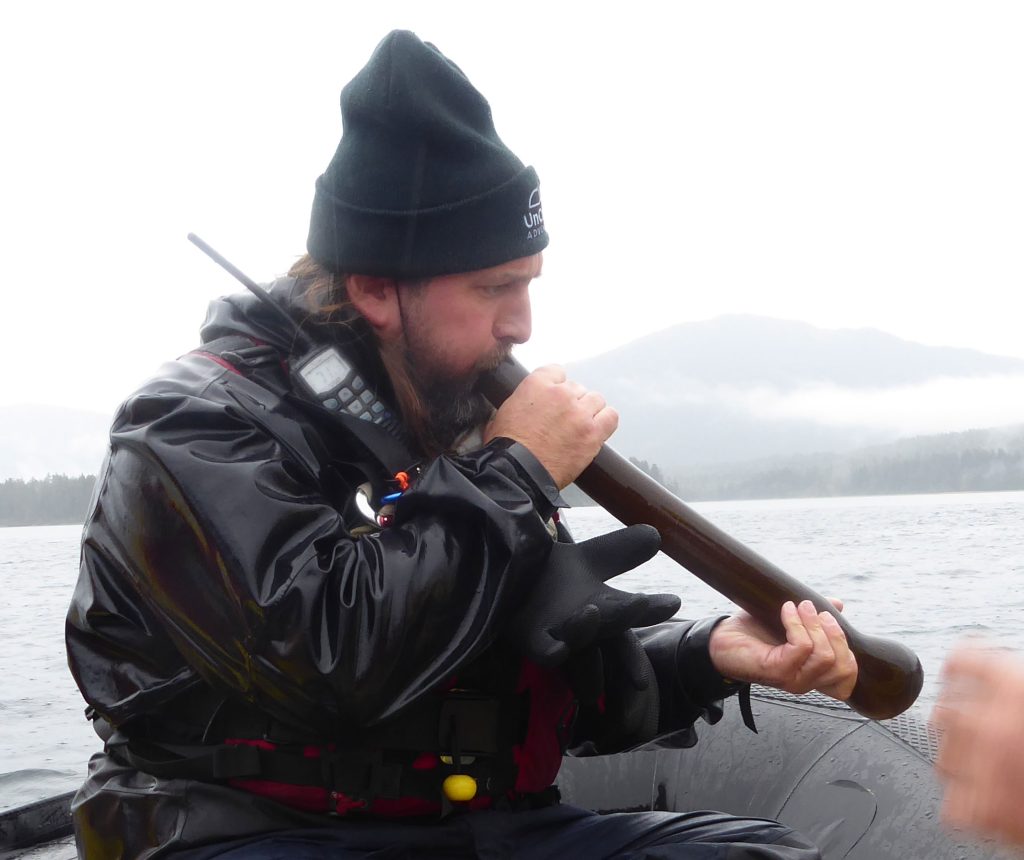
Here is a 360 view of the area. I took this with my Theta camera. Yes, it was raining a fair amount this afternoon.
Skiff tour of Big Bear Baby Bear State Marine Park on September 14, 2022. #SEAK22WD #theta360 – Spherical Image – RICOH THETA
I also took a GoPro video of the area as we toured on the skiff. If you are curious, we did not see any bears (big or baby). We did see evidence of bears (mostly droppings and paw prints).
Another amazing day in south eastern Alaska. I hope to post more details about the next day, September 15, 2022, soon.


